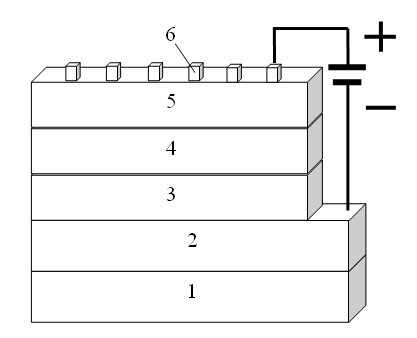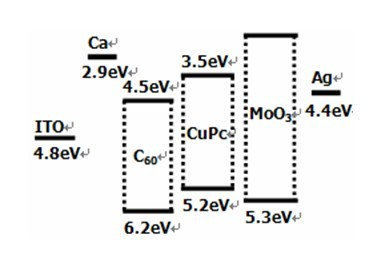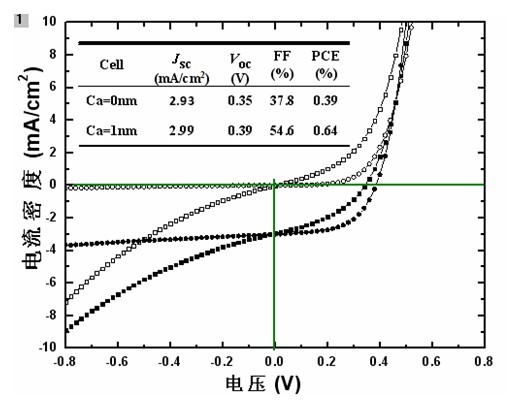Organic small molecule solar cell with inversion structure
A solar cell, small molecule technology, applied in circuits, photovoltaic power generation, electrical components, etc., can solve problems such as metal electrode pollution, achieve the effect of good air and moisture, improve pollution problems, and improve stability.
- Summary
- Abstract
- Description
- Claims
- Application Information
AI Technical Summary
Problems solved by technology
Method used
Image
Examples
Embodiment 1
[0019] Embodiment 1, an organic small molecule solar cell with an inverse structure, which includes: sequentially preparing a cathode modification layer 2, an organic small molecule electron acceptor film 3, and an electron donor film 4 on the conductive layer of an ITO glass substrate 1 , the anode modification layer 5 and the metal electrode 6 .
[0020] The material of the cathode modification layer 2 is Ca with a low work function, and the thickness is 1 nanometer; the material of the organic small molecule electron acceptor film 3 is carbon 60C 60 The material of the electron donor film 4 is copper phthalocyanine CuPc; the material of the anode modification layer 5 is MoO 3 , with a thickness of 8 nanometers; the metal electrode 6 is used as an anode, and the material is Ag.
[0021] When preparing the cathode modification layer 2, the evaporation rate of Ca was 0.02 nm / s.
[0022] When preparing the anode modification layer 5, MoO 3 The evaporation rate is 0.2 nm / s. ...
Embodiment 2
[0034] Embodiment two, the difference between embodiment two and embodiment one is: the material of cathode modification layer 2 is Mg, and thickness is 2 nanometers, and the material of organic small molecule electron acceptor thin film 3 is material carbon seventy C 70 , the material of the metal anode 6 is Au.
Embodiment 3
[0035] Example 3. The difference between Example 3 and Example 1 is that the material of the cathode modification layer 2 is Ce, and the material of the electron donor film 4 is Pentacene, with a thickness of 25 nanometers.
PUM
| Property | Measurement | Unit |
|---|---|---|
| Thickness | aaaaa | aaaaa |
| Thickness | aaaaa | aaaaa |
| Thickness | aaaaa | aaaaa |
Abstract
Description
Claims
Application Information
 Login to View More
Login to View More - R&D
- Intellectual Property
- Life Sciences
- Materials
- Tech Scout
- Unparalleled Data Quality
- Higher Quality Content
- 60% Fewer Hallucinations
Browse by: Latest US Patents, China's latest patents, Technical Efficacy Thesaurus, Application Domain, Technology Topic, Popular Technical Reports.
© 2025 PatSnap. All rights reserved.Legal|Privacy policy|Modern Slavery Act Transparency Statement|Sitemap|About US| Contact US: help@patsnap.com



